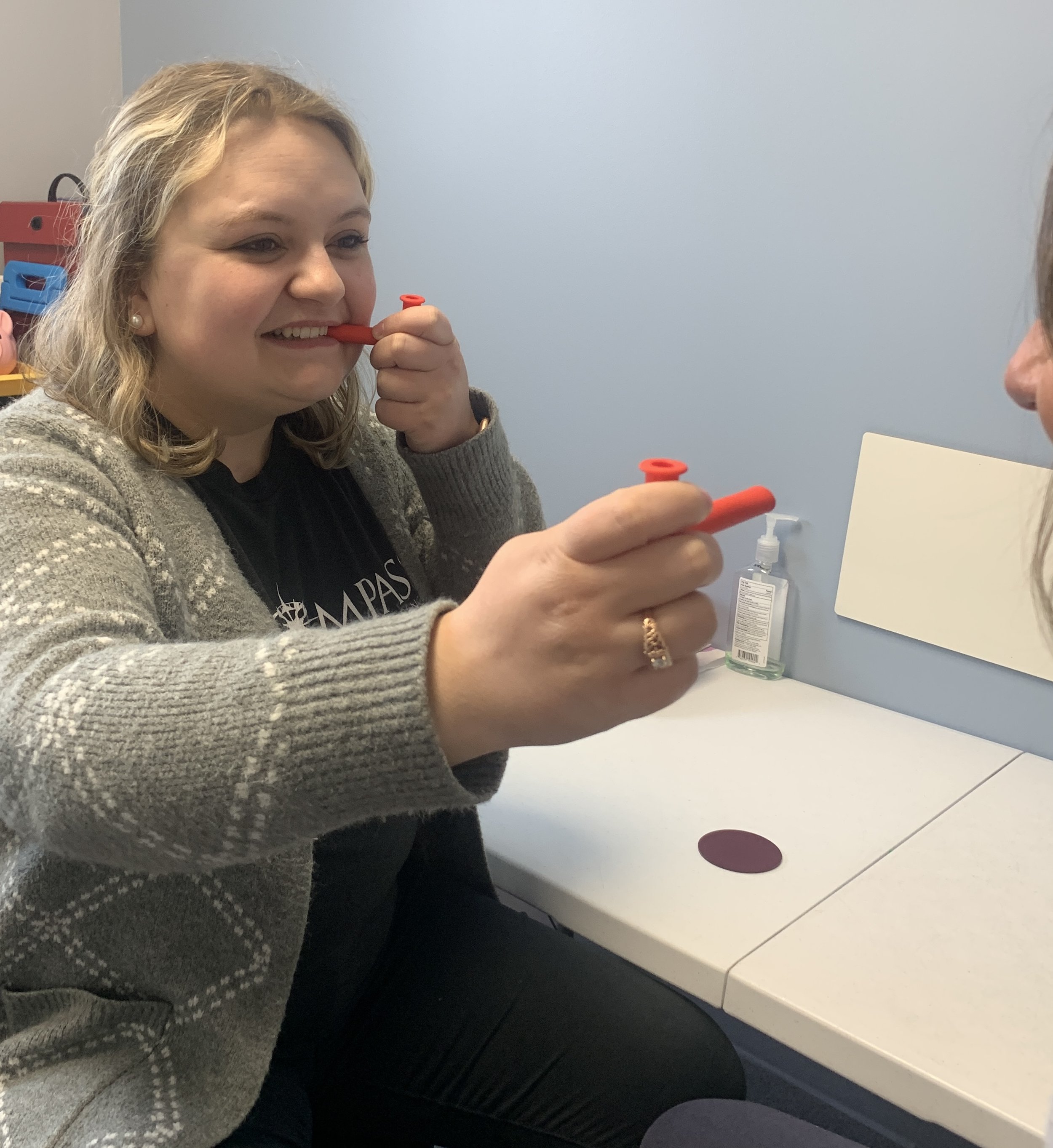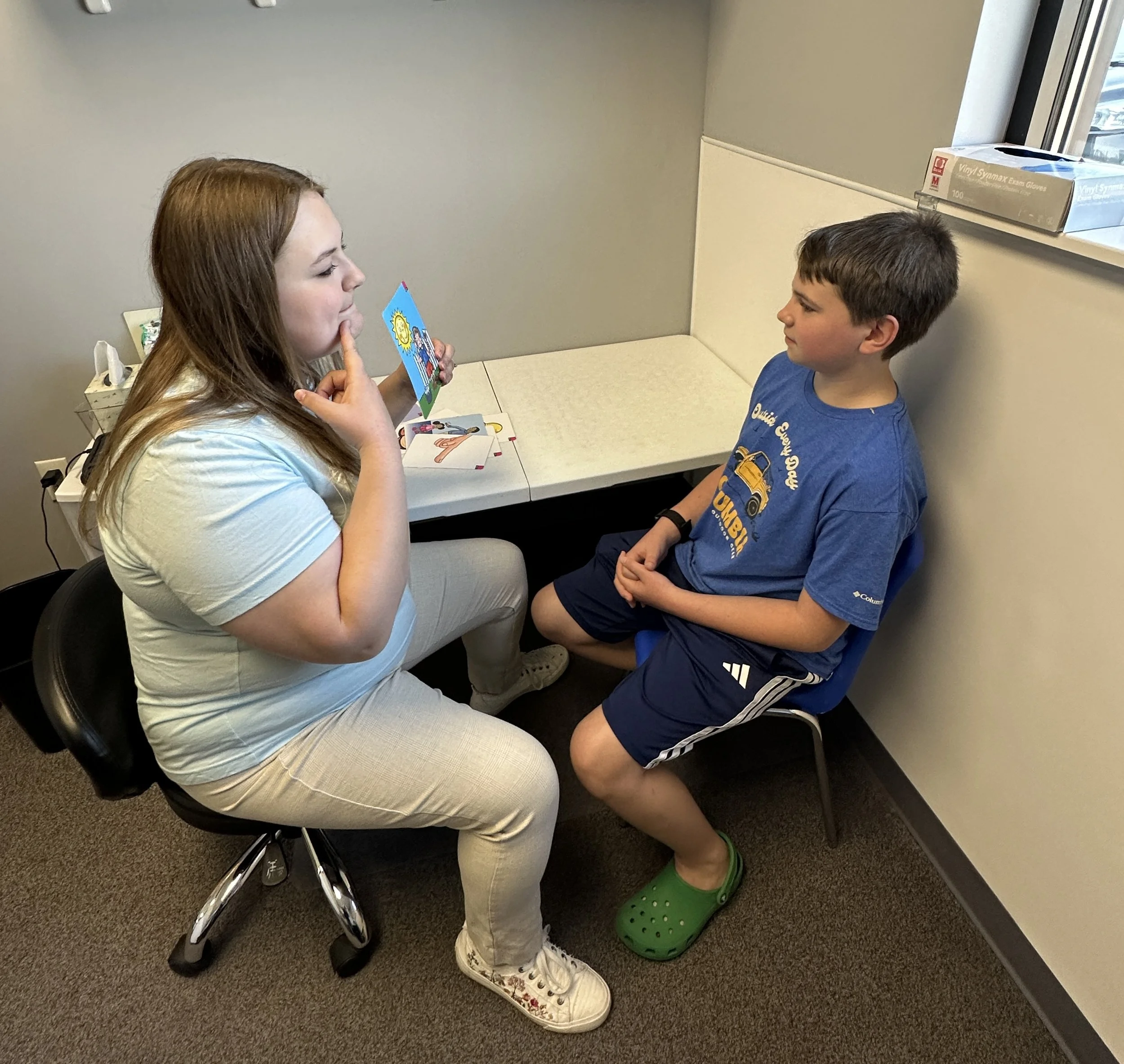Evaluation Process & Treatment
A comprehensive evaluation is performed that assesses speech intelligibility, expressive language, receptive language, and social communication skills. The information gathered from this assessment leads to an individualized treatment plan with personalized goals. We also utilize administration of the Kaufman Speech Praxis Test for Children (KSPT) to evaluate Childhood Apraxia of Speech (CAS).
Following the evaluation, each child receives an individualized treatment plan with personalized goals based upon a comprehensive evaluation. Each treatment session involves one-on-one treatment with a certified Speech-Language Pathologist (SLP). We promote errorless learning as well as teaching self-correction for greater generalization. Our SLP utilizes the Kaufman Speech to Language Protocol for treatment of CAS. ABA principles implemented during each session include reinforcement, behavior management, errorless learning, natural environment teaching (NET), and generalization.
Speech Sound Disorders
Some of the speech sound disorders that may be diagnosed include articulation disorder and phonological disorders. The articulation disorder diagnosis results in errors in speech resulting from inadequate tongue placement and voicing. These errors are seen with individual sounds as distortions or an inability to produce the sound. The phonological disorder results in errors in speech which are due to a pattern that affects multiple sounds and is used to simplify speech. These errors are seen across multiple words involving multiple sounds.
Childhood Apraxia of Speech
Childhood Apraxia of Speech (CAS) includes difficulties with planning the motor movements needed to sequence speech sounds, words, phrases, and sentences. Errors made are often inconsistent, affecting both tongue placement and prosody.
Expressive & Receptive Language Disorders
An expressive language disorder diagnosis involves difficulties with expressive vocal language necessary to communicate wants and needs as well as communicating with others. Examples of weaknesses include: limited vocabulary, use of short phrases or incomplete sentences, or difficulties with using pronouns. A receptive language disorder involves difficulties understanding language necessary to engage in daily tasks and communicating with others. Examples of weaknesses include difficulties following directions, identifying pictures or objects, or answering questions.




